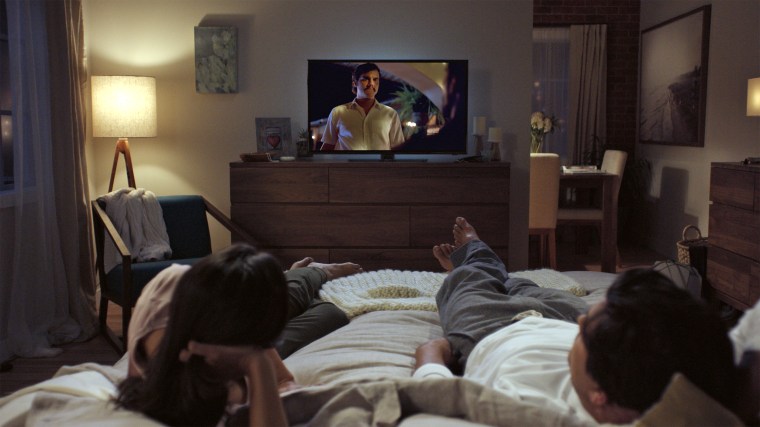Screens large and small are already flooded with splashy commercials for competing streaming services trying to lure viewers with budget-busting, celebrity-soaked new shows, movies, fan favorites and classics.
And there's more to come. Next month, Apple and Disney will each launch their own subscription streaming services, Apple TV+ and Disney+, joining an already crowded landscape of online viewing options from Netflix, Amazon, Hulu and Sling, to name a few.
These streaming video services may offer consumers broader choices, but they’re also creating confusion — and indecision.
Viewers in the 18- to 34-year-old range are spending as much as nine minutes trying to decide what to watch, according to Nielsen, the ratings service.
“I think if I add another three services I would get lost,” said Kelly Traudt, a tech recruiter from Morristown, New Jersey. “I have HBO Go, Netflix, Amazon Prime, and Hulu. I watch a lot of shows," she said. Her children also have their own taste in shows, which, she notes, means, “It’s getting expensive.”
Viewers need to consider not only how many services they need to purchase in order to watch all their favorite shows, but also how to keep up with the hopscotching of each show from one platform to another as licensing deals expire.
For example, the period drama series “Downton Abbey,” which first aired on PBS in 2010, has bounced around the streaming universe since its departure from TV, initially going to Netflix, then to Hulu, and later to Amazon Prime. The show is now headed to Peacock, the ad-supported streaming service being launched next year by Comcast’s NBCUniversal, which also owns NBC News.
Fans of the CBS show “The Big Bang Theory” won’t find old episodes on the network’s streaming service, CBS All Access. The sitcom, made by Warner Bros., was acquired for an estimated $1 billion by Warner’s parent company AT&T to bolster subscriptions to its own HBO Max, a supersize online-only version of HBO that will launch this spring. “The Big Bang Theory” will also continue to air on the traditional cable network TBS, and will be online for subscribers, and available for per-episode purchase on Amazon.
That confusion has given rise to a plethora of decision-assistance sites, such as Just Watch and Flixable.
“Services don’t do a great job of letting customers know what’s on and what’s not,” said Mark Graham, editor-in-chief of Decider.com, a 5-year-old website dedicated to helping consumers feel their way around the streaming landscape. “There is a mass of customer confusion — and it’s only going to get more confusing.”
Around 7 in 10 homes now have a subscription streaming service, according to Nielsen, and the services are nipping at the heels of conventional TV and cable. Conventional viewing is down 15 percent over the previous year ending in September, whereas spending on subscription streaming TV and movies jumped 25 percent this year, according to the Consumer Technology Association. The organization’s latest report found that that consumers spent $17.6 billion this year, a total that will rise to $21.9 billion in 2020.
“Consumers are still trying to figure this out. Do I cut the cord or not? We’re in the middle of a transition phase from pay-TV model to streaming model,” said Rick Kowalski, senior manager of business intelligence at the CTA. “The platforms are still trying to figure out which content and what’s the most comprehensive package they can offer, based on what their vision is. But I think we’re still in a very transitional phase.”
That heady combination of choice, cost and the merry-go-round of shows shifting platforms could ultimately mean consumers are unlikely to buy many more streaming services than they already have, said Mike Vorhaus, chief executive at Vorhaus Advisors, a media consultant. He presented research at a recent Goldman Sachs conference suggesting consumers are really only in the market for perhaps another 1.6 streaming services.
“Viewer confusion? That’s happening every day,” he said.
